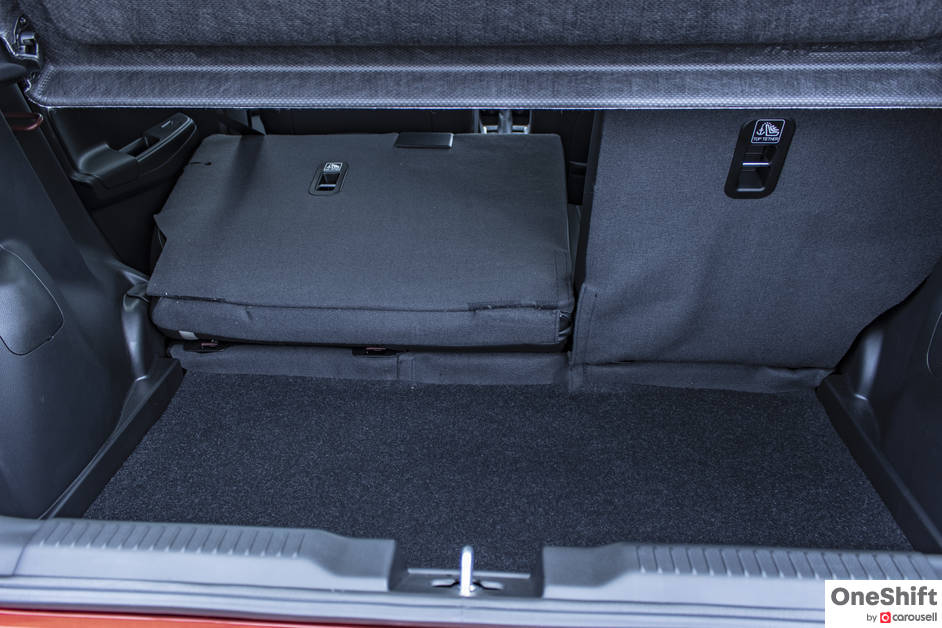Spiffy Swifty
So when Suzuki announced that they were going to launch another Swift model, we got our hopes up for their Swift Sport pocket rocket, but instead, they came back with another iteration of their bread and butter hatch… So is their reworked bread-and-butter hatch, any better than their previous bread-and-butter hatch?


It was in 2018 that Japanese small car manufacturer, Suzuki launched their Swift small hatchback. Back then, the third generation car was introduced with a 1.0 litre Boosterjet 3-cylinder engine, matched to a 6-speed automatic transmission; ensuring that the spritely little hatchback could easily keep in-pace with traffic, while returning quite a respectable 17.5km/l.

So when Suzuki announced that they were going to launch another Swift model, we got our hopes up for their Swift Sport pocket rocket, but instead, they came back with another iteration of their bread and butter hatch… and here it is. (Notice the full stop and not an exclamation mark?) Yaay.
While this is not a real facelift, there is a new front grille, which includes the addition of a chrome strip. But this econobox is not as boring as it seems, especially if you are someone who likes a car that sips on fuel.

The interior of the Swift, is almost identical to the 1.0 model that it replaces. You still get a good fill of drab, and rather cheap-feeling plastics, which seems to be a Suzuki thing, though we must say that the quality of its switchgear is quite decent.

The tri-dialed air-conditioning toggles are a pleasant touch, though the system is a single-zone one. The effectiveness of its cooling could however be improved upon.
There is a new entertainment system, which is a slight improvement over the previous one, and now supports both Apple CarPlay and Android Auto. The screen also doubles as the display for the reverse camera, though the guide marks are static ones.

The button blanks which were a-plenty, have been filled up with toggle switches since the car now features their Suzuki Safety Support (ADAS) Suite. This adds an additional layer of accident avoidance and mitigation hardware to the car, that includes Dual Sensor Brake Support, Lane Departure Warning and Weaving Alert. With the ADAS, Suzuki has also included Adaptive Cruise Control (ACC) into the mix, taking some of the strain out of your driving duties, especially in Singapore’s variable highway speeds.

I particularly like how comfortable the front seats are, and for the driver, the steering adjusts for both the rack and rake. Rear passenger space for someone of my 171cm stature is sufficient, and even with the slight sloping roofline, it isn’t difficult to enter or exit the rear, thanks to the squared-off rear door aperture. I could do without the locally-fitted leather upholstery, though the fit and finish is very good.

While boot space at 264 is rather tiny, when compared to the European-built SEAT Ibiza’s 355 litres, it is still an improvement, when contrasted against the previous generation Swift.
The biggest change to the Swift, is its new 1.2 litre Dualjet in-line four engine, paired with a mild-hybrid drive unit. The 6-speed automatic has also made way for a CVT transmission for a smoother drive delivery.
Where the 1.0 turbocharged engine produced 108hp and 160Nm, the new setup makes do with a more humble 82hp and 107Nm. The drive system is paired with Integrated Starter Generator (ISG), which not only starts the engine and charges the battery; but also assists in putting drive to the wheels. This is quite ideal for the start-stop nature of our roads, since the ISG does take up a portion of the acceleration duties, reducing the load the engine traditionally needs to shoulder.

Overall, the Swift delivers a smooth ride, however there are moments where you will find a little bit of lag between engine and electric drive transitions. That said, the Swift keeps its rpms very low at highway speeds, delivering a smooth, fuss-free and frugal drive. While Suzuki claims 24.2km/l, I managed 19.7km/l, this is but with a slightly more impatient right foot... Still very impressive.
The mild Swift hatchback is also confidence-inspiring around the bends, ensuring that this budget car does offer its owners a tiny dose of fun; though the rear-end does twitch a little when it gets unsettled. The MacPherson Strut front, and Torsion Beam rear - a simple setup, has been tuned with comfort in-mind, and does quite a fine job of soaking up our average “lumpitybumps”. I do wish that Suzuki had paid a little more attention to the car’s insulation, as road noise does intrude a little too much for my liking.
The revised Suzuki Swift, while it does produce less grunt versus the 1.0 turbocharged car, offers owners a little more refinement, and improved fuel economy.
In this case, less is really more.

Credits: Words and Photos by Clifford Chow








Get the Best Price for your used car
from 500+ dealers in 24 hours

- Convenient and Hassle-Free
- Consumer Protection
Transparent Process
With No Obligation








